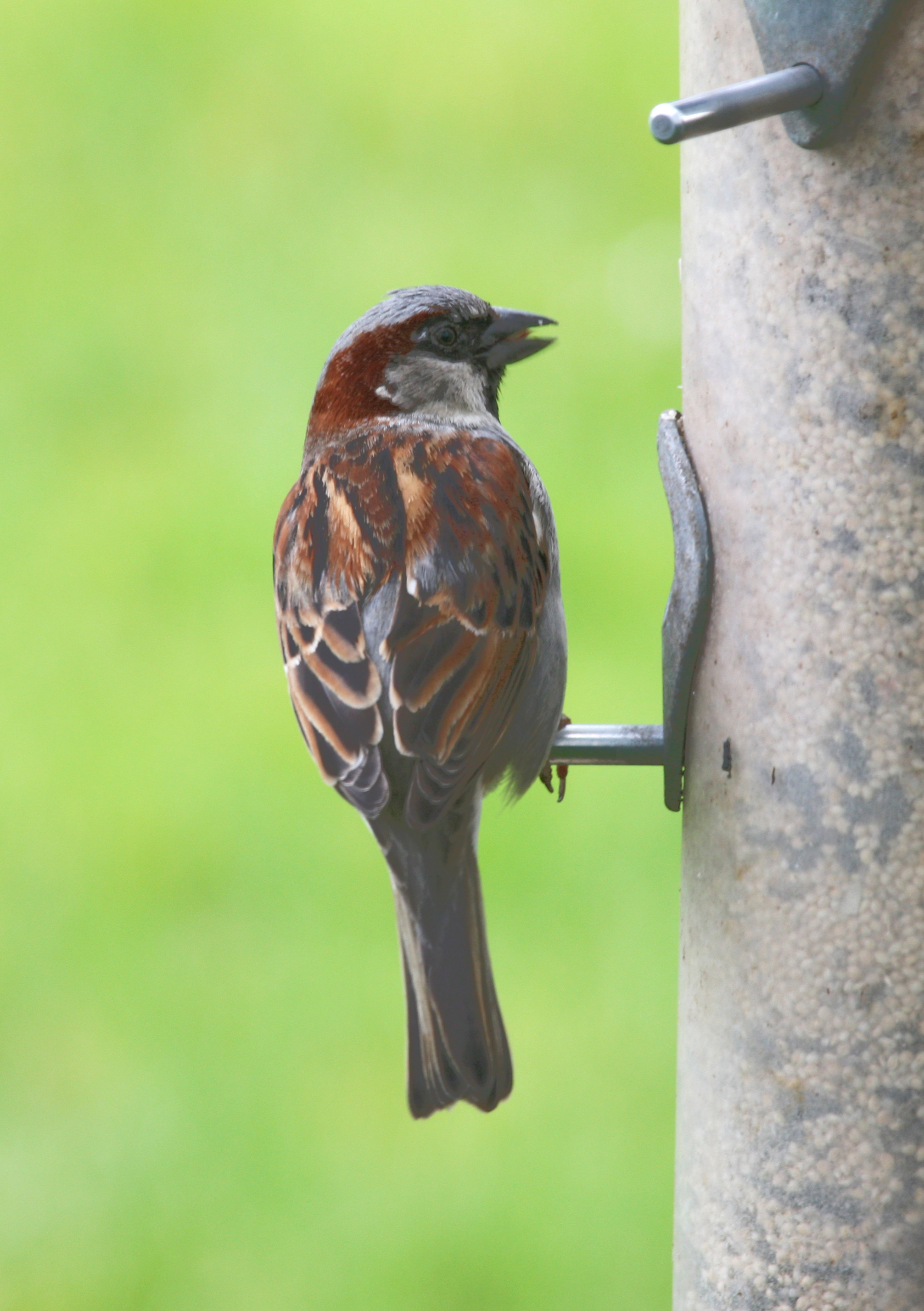

Very faint, thin malar stripes may border the throat but are difficult to see.

Though her colors may be less bold than a male's, the female house sparrow has distinct markings that can help birders readily identify her. The tail is typically held closed and remains still when the bird is perched.įemale birds are often more heavily camouflaged than their male counterparts, and female house sparrows are no exception. Tail: The medium-long tail is dark with buff edging, and shows a small notch at the tip.Feet: If visible, the legs and feet of male house sparrows are a pale fleshy color.

A faint brown wash may show on the rump closer to the tail. Rump: When the wings are slightly drooped or the bird is in flight, the plain gray rump is easily visible.Wing Bar: The white wing bar is readily visible on all male house sparrows, though the width and extent of the bar will vary depending on posture and wing position.Back: The buff, brown, and black streaking on the back is clearly visible on male house sparrows and extends to the bird's shoulders.These "cheek patches" are bordered at the front by the black throat and bib and at the rear by the red-brown and the gray nape. Auriculars: The male house sparrow's auriculars are pale gray.Bill: The triangular bill is the ideal shape for cracking seeds, and varies from a dirty yellow-gray color to solid black.It is easily visible when the birds are viewed from behind. Crown: The extent of gray on the crown varies, but generally extends to the nape.When watching a flock, look for the following clues that they are house sparrows: Seen from behind, male house sparrows show distinct colors and markings that can be useful for identification. This is particularly true at feeders where they are often considered bully birds because of their aggression while feeding. They may also join mixed flocks with house finches or other sparrow species. Flock: House sparrows are gregarious birds that are frequently found in flocks ranging from just a few birds to dozens.The tail feathers are dark with buff edging. Tail: The tail is medium-length and is typically held closed, with a relatively straight edge, though a small notch may be visible.Undertail Coverts: Like the rest of the underparts, the undertail coverts are plain, medium gray.They can have a spotted appearance, depending on the bird's posture and molt timing. Wings: The primary feathers and secondary feathers are brown with black centers.Underparts: The underparts are a plain, dull gray and may show some faint blurriness but lack distinct markings.The extent of that visibility can vary depending on the bird's posture and feather positions. Wing Bar: One fairly broad, white wing bar is visible.Some buff or gray may also show on the back. Back: The back is vertically streaked with black and a warm red-brown.
#English sparrow Patch
On dominant older birds or in fresh spring plumage, the patch is larger and darker. On younger birds or in fresh fall plumage, the black may be much less and may show mottling.

Some birds have a very wide, deep crown, while others have a smaller, less distinct gray patch. Crown: The crown from the bill to the nape is gray, but the extent of the gray can vary.To identify male house sparrows, look for: However, there can be a great deal of variation among different subspecies and geographic populations, which makes learning key field marks for these birds essential for proper identification. Male house sparrows are distinctly marked. The Spruce Home Improvement Review Board.


 0 kommentar(er)
0 kommentar(er)
